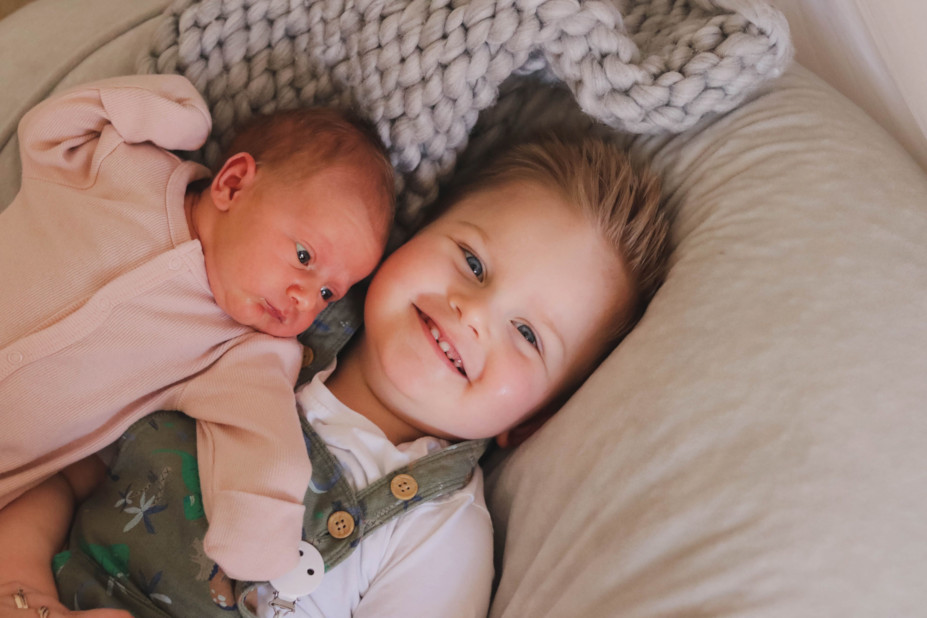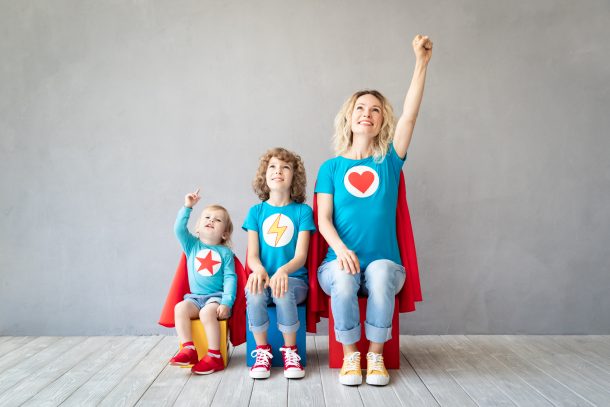By Maya Pinn
24-year-old Maya is mum to Lloyd (6). She is a recent university graduate, admin for Swan (Syndromes Without A Name) and owns RareWear – an adaptive clothing brand for children.
How did you first become aware that there might be a concern about your child’s health or development? What were the early signs that led you to seek a diagnosis?
I had a difficult diagnosis journey with Lloyd as I was just 18 years old when I gave birth to my little guy and was constantly undermined by medical professionals due to my age.
When he was around 4 months old, I noticed that Lloyd wasn’t meeting his developmental milestones, and this became even more obvious by the time
he was six months. He didn’t engage with toys, wouldn’t attempt to roll and wouldn’t tolerate pureed food.
When Lloyd was 8 months old, I took him to the MCHN but I was dismissed and told that they would revisit any concerns I had at his 12 month check-up. At this appointment he hadn’t met any developmental milestones; there was an 18 month wait for a paediatrician appointment at Monash so I obtained a private referral. The paediatrician was fantastic and referred us to all the specialists you could think of; audiology, cardiology, neurology, ophthalmology etc, and he was referred for an MRI. She diagnosed him with Global Developmental delay, hypotonia, hypermobility, left eye exotropia and a few other minor diagnoses, and we were sent on our merry way to see all the other specialists.
Over the course of 12 months we completed every test possible to find an answer to what was the root cause of his issues and there was nothing ‘wrong’;
no diagnosis, no prognosis, nothing. I researched for hours, whilst working full time and finally asked my GP to refer us to the Genetics Team (VCGS) at the RCH.
After some advocating with the Genetics team and long hard hours of researching hundreds of rare genetic conditions, Lloyd was finally diagnosed at 2.5 years old.
Can you tell us a bit about the diagnosis your child received? What does it mean, and how does it affect your child’s life?

Lloyd has ‘IQsec2 Associated Disorder’ – a mutation of his iqsec2 gene that is located on his X chromosome and is denovo – not inherited but randomly occurred during conception. There are approximately 300 cases diagnosed worldwide with approximately 12 cases in Australia, all with different variances of gene change.
Lloyd has quite a severe spectrum of his condition and has a severe intellectual disability with cognitive function at approximately 6-12 months old. He is
fed via a PEG, has epilepsy and cortical vision impairment, as well as hypotonia, hypermobility and left eye exotropia. Lloyd is dependent on his wheelchair but can walk very short distances in a walking frame. He is learning how to use an eye gaze to communicate as he is non-speaking.
How has the diagnosis impacted your family dynamics and daily routines? Have there been any specific challenges or adjustments you’ve had to make to support your child?
When Lloyd was very young, my full- time employer took away my full-time contract as I was having so much time off to attend appointments which was hard financially and mentally. My marriage to my ex-husband was also severely affected – more by the diagnosis journey than the diagnosis itself. And the weight this journey had
on me left me with PTSD and crippling anxiety. We currently co-parent in separate households and do so amicably, but this is very difficult with a medically and developmentally complex child.
Lloyd requires a wheelchair, wheelchair van for transport, standing frame, activity chair, disability bouncer, eye gaze AAC, anti-seizure medication, feeding tube pumps and equipment, alongside hours upon hours of therapy every week so there are a lot of logistics to work out!
Our daily routine is almost always the same for our little family of 3 (Lloyd now has a sister). We eat breakfast together, then drive and drop off to different places. Lloyd to his special school for Prep, Elsie, his sister, to her day-care, and I head home to work for SWAN on my laptop or work on my product development and other small business ventures for RareWear.
What kinds of treatments, therapies or interventions has your child been receiving? How have these approaches helped your child’s development and wellbeing?
Lloyd has physiotherapy, exercise physiology, speech therapy, OT and an annual therapy intensive. He wears a Second Skin suit, AFOs and is PEG fed. All of these things have had a hugely positive impact on his quality of life and abilities.
What are your primary concerns and hopes for your child’s future in light of their diagnosis?
My primary concern for Lloyd is that he will not have a typical upbringing with heaps of school friends, party invites etc. I am also worried that he will be excluded from events that Elsie will be able to attend but he can’t.
I hope that he gets to enjoy as many things as his sister and that in doing so, their sibling bond and our bond as a family will grow and flourish. I just wish for Lloyd and Elsie to be happy and for the community around us to continue to accept and include us as much as possible.
I will go to the ends of this earth to advocate for inclusivity, not only for my children but for children with all different abilities and needs. Every child deserves
a good quality of life as well as fun and happy moments to cherish.
Lloyd loves cars and music, particularly old classic Holdens, as well watching cars doing burnouts on YouTube. His favourite songs are Hells Bells by ACDC, The Unforgiven by Metallica and Blue on Black by Five Finger Death Punch. Whilst he has a severe disability, he isn’t so different after all!




